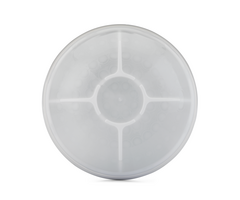360-Degree Wireless Motion Sensors


Many users prefer the coverage pattern provided from 360 degree motion sensors rather than the typical coverage pattern used with standard motion sensors. Most motion sensors look outward and scan across a room. A 360 degree motion sensor looks directly downward and captures movement that occurs below. This coverage pattern can be advantageous in certain applications.
Since 360 degree motion sensors looks downward, these devices are typically mounted on the ceiling. Many people actually refer to 360 degree motion sensors as ceiling-mount motion sensors. As a general rule, a ceiling-mount motion sensor is expected to have a 360 degree coverage pattern. This way, it will detect any movement that occurs directly below.
The way that 360 degree motion sensors differ from regular motion detecting sensors is strictly in coverage pattern. In terms of actual detection method, they are largely the same. Both motion sensor types are passive infrared (PIR) devices that look for changes in infrared energy that occur with movement. If a substantial change in infrared energy is detected, then the sensor will activate and alert the security system.
For best possible results, a 360 degree motion sensor will need to be mounted from a recommended height. This is usually between 8 and 12 feet. As the motion is mounted higher up, the detection diameter will increase. But mounting the motion sensor too high will prevent the detection signal from traveling far enough to pick up the motion that occurs below. Make sure to check the manual for your 360 degree motion and install the device at a recommended height.
A popular option is often to place 360 degree motion sensors directly above an entryway or a door or window. If an intruder enters, the will need to walk right through the detection path for the 360 degree motion sensor. This can be great for effectively monitoring an specific area, without monitoring the entire room. Some users who have dealt with false alarms may find that 360 degree motion sensors are better for their rooms.
The 360 degree motion sensors listed on this page are all wireless sensors. They transmit wireless RF signals to a compatible wireless receiver used with the panel. You need to make sure that the wireless 360 degree motion sensor you choose communicates at a wireless frequency that is compatible with your system. If the sensor does not communicate at a compatible frequency, then it will not work with your system.

